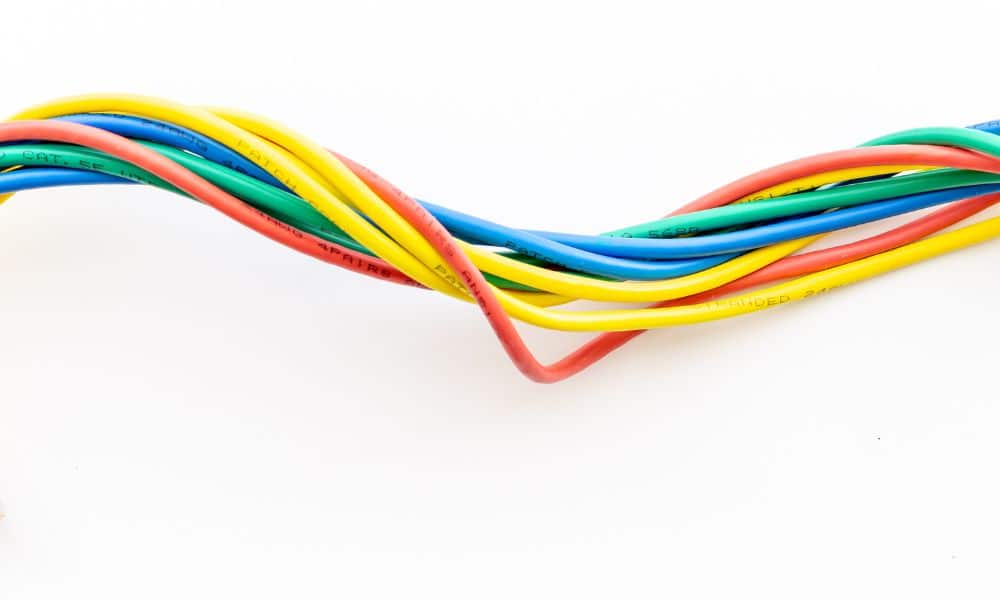An Overview of the Different Wire Color Codes

The intricate networks of electrical systems are integral to industry, power, and technology. Electrical systems hinge on conventions like wire color codes to maintain order and safety. Our overview will explain the ins and outs of different wire color codes, what they mean for electricians and other industry professionals, and why they’re so important.
The Importance of Wire Color Coding
Before unraveling the schema of wire color codes, we’ll contextualize their importance. Imagine a world where every road sign meant something different to every driver.
Chaos would reign, and safety would be a distant dream. The same principle holds for electrical systems. Wire colors are universal indicators, providing critical information at a glance and ensuring the safe operation of equipment.
Establishing the Foundation of Safety
Safety is the primary goal of wire color codes. These visual cues help technicians identify the function and characteristics of a wire, reducing the risk of accidents and errors in a work environment. Safety is non-negotiable, especially in the context of industrial standards and electric codes that dictate guidelines for color implementation.
A Beacon of Standardization
Beyond safety, wire color codes symbolize standardization—the North Star guiding practices across the globe. Uniformity aids international cooperation, allowing different manufacturers to produce equipment that complies with the same standards so electricians understand and work with various systems and devices easily.
Decoding the Standard Spectrum
Wire color codes encompass a rainbow of hues, each representing unique roles and functions. Here’s a rundown of the standards and their specifics.
Phase Wire Colors
In alternating current (AC) installations, the phase or “hot” wire carries the live electric current. The ubiquitous black, red, and blue signify these wires, with brown being the color code used internationally where single-phase systems are prevalent.
Grounding With Green
Ground wires provide a path to earth for fault currents. Green and yellow are synonymous with grounding. These wires help to prevent electrical fires, shock hazards, and equipment damage.
Neutrals in White and Gray
Neutrals complete the triumvirate of common wire functions. Where phase wires hold the potential difference, neutrals ensure a closed loop, grounding the system. White and gray typically denote neutral wires, with white being more common in the United States and gray in the United Kingdom.
The Dynamic World of Wire Codes
The wire color code spectrum is vast, with shifts and variations shaped by local needs, historical context, and technological advances.
Tailoring to Industry and Geographical Needs
Different industries may require their own color codes to convey information or endure unique environmental conditions. In addition, geographical regions often exhibit preferences that professionals must adhere to when working on multinational projects or dealing with imported equipment.
Evolving To Meet Modern Demands
Change is the mark of progress, and wire color codes are not exempt from this rule. The march of technology fuels new requirements and applications, prompting updates to existing standards. Smart homes, renewable energy systems, and advances in cable management contribute to our evolving world.
Weaving Codes in Every System
Understanding wire color codes is a practical imperative for electric industry professionals. How do these codes translate into real-world applications, and how do we use them to bring structure and safety to the systems we depend on?
Anatomy of an Electrical Installation
From the luminous pathways in residential wiring to the complex nerve centers of industrial machinery, electric systems are well-planned and executed. Adherence to wire color standards is non-negotiable for electricians. It ensures the function of power outlets, light fixtures, control panels, and many other electrical devices.
Navigating Real-World Scenarios
Knowledge of wire color codes equips professionals to decipher wiring diagrams, troubleshoot faulty connections, and understand how components in a circuit interact. Each scenario brings unique challenges based on factors such as wire gauge, insulation type, and color-coding specifics.
Historic Stitching and Future Patches
Origins of Wire Color Coding
The inception of wire color coding systems harkens to the early days of electrical engineering. Initially, electrical systems were rudimentary and lacked any form of color differentiation, leading to confusion, inefficiency, and dangerous accidents.
Industry pioneers recognized the need for a standardized approach to enhance safety and facilitate system design, so they created color codes. Adopting colors for different types of wires paved the way for the complex yet ordered electrical systems we rely on today.
Updating the Palette for Tomorrow’s Innovations
The push toward sustainability, the proliferation of smart devices, and the evolving nature of energy infrastructure presage a need for updated color coding. New colors, patterns, and numbering systems may soon debut, reflecting technological shifts in power consumption and production.
Compliance and Best Practices
Understanding wire color codes demands adherence to standards and a proactive stance on safety measures. What steps should professionals take to keep up with best practices in the field?
Complying With the Tapestry of Regulations
Regulations surrounding wire color codes constitute the legislative backbone of electrical safety. Every technician and manufacturer must adhere to protocols set by the Occupational Safety and Health Administration (OSHA) in the United States and the International Electrotechnical Commission (IEC).
Embroidering Safety in Every Action
Beyond legal requirements, there’s an ethical and practical imperative to embed safety into every aspect of electrical work. Conducting regular training, wearing personal protective equipment (PPE), and double-checking connections can protect electricians and avert disasters.
Cable Marking and Color Codes
Cable marking is an additional communication layer in electrical installations, harmonizing with wire color codes to enhance clarity and safety. While color codes provide a quick visual reference to a wire’s purpose, cable markings offer detailed information on voltage rating, wire type, and manufacturer details.
This symbiotic relationship ensures technicians can swiftly identify the function of a wire through its color and understand its capabilities and limitations through its markings. Cable marking machines must produce precise, legible, and durable markings on wires to make them readable and long-lasting. The intersection of cable marking and wire color codes offers valuable information to electricians. It streamlines the installation process and encourages adherence to best practices and regulations.
Update Your Wire Marking Process With Tri-Star Technologies
We hope our overview of the different wire color codes has been informative and helpful for those looking to learn more about this integral coding system. At Tri-Star Technologies, we understand the importance of precision and safety for electrical engineering, which is why our laser wire marking systems create clear, indelible wire marks. If your process could benefit from an automated laser marking system, browse our inventory or contact our staff today.



